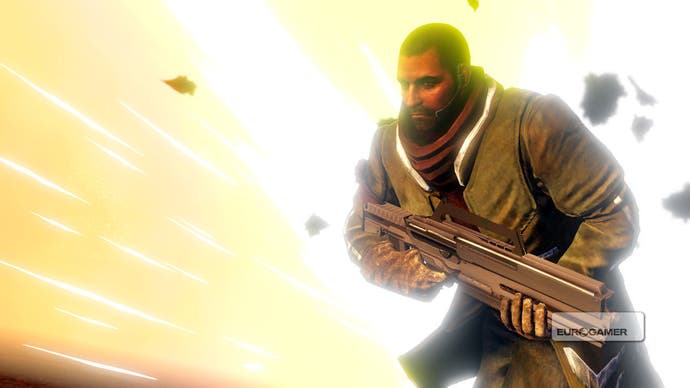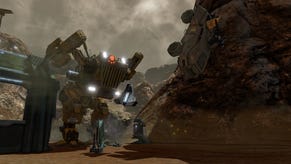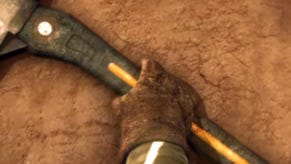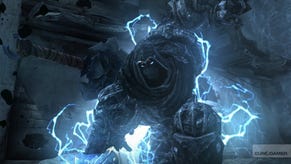Red Faction: Guerrilla
Hammer time.
For all its claims about amazingly realistic physics, Red Faction: Guerrilla is not, it seems fair to observe, a beacon of verisimilitude. For a start, a decent running jump can send you wafting through the air like Carl Lewis on steroids (well, more steroids), and with so many tumbling buildings, you're also an impressively robust little revolutionary fighter, able to withstand crushing injuries that would rend most of us to dust, or at least break the odd finger and displace our stylish neck-scarf. Plus, of course, you have a magic sledgehammer that can knock down multi-storey buildings in the space of about two minutes.
While I am happy to be told I'm wrong, I'd imagine the idea of the sledgehammer, and certainly it's amazing potency, came after the destruction technology, which has caught the green eyes of the game's rivals. Claims that buildings respond completely realistically to the removal of vital beams and supporting walls have been slightly exaggerated, but the effect is sufficiently consistent, and buildings can be broken apart to a much greater degree than they can in other games. The problem for developer Volition must have been how to get the most out of it once the system - dubbed GeoMod 2.0 - was in place. Hence the sledgehammer, and the stompy robot walkers.
And, it also seems fair to say after a few hours playing the finished game, hence most of the missions. Because while RFG may be a game about fomenting revolution amongst the miners of Mars, it's really a game about blowing stuff up and knocking stuff down. The good thing, at least potentially, is that it makes no mistake about that, unlike Fracture, to use a recent example, and to give me another excuse to kick it in the face for all the hours I'll never get back.

For instance, RFG wastes no time setting itself up. You land on Mars. You meet your brother. He tells you how the in-game currency system works (smash stuff up, collect shiny leftovers). You talk about the "Red Faction" opposing the oppressive EDF government. You say you don't want anything to do with that, to be honest. Then he gets killed, so you join up anyway, and become the usual one-man-revolution. A few screens of explanation later, you know you've got to liberate the six Mars regions one by one by completing jobs marked on the map. Some of them are story missions, and others are side missions, and you can carjack buggies, pickups and other Marsy vehicles to move between them. So you get on with it.
Most of the action begins and ends in safehouses - little rebel enclaves hidden amongst the rocky terrain, each of which has an upgrade tent where you can spend your hard-earned rubble on new weapons and armour; a store cupboard for restocking ammo, and switching your weapon loadout; and a helpful respawning vehicle or two. Not only do the safehouses furnish you with revolutionary sustenance, but they also get the fuzz off your tail, eliminating RFG's equivalent of a GTA wanted level whenever you cross the threshold to their confines. (This also doubles as a good justification of EDF's status as The Enemy, because you suspect they could put down the revolution fairly easily if they invented a homing tracker, or GPS or something, rather than spamming you with suicidal APCs.)

Missions are almost exclusively about destruction, at worst tangentially. Your primary interest is not in the rather feeble EDF assault rifle you're packing, but in the sledgehammer and your chuckable remote-detonation mines. In EDF destruction side-missions, for example, the idea is to use the map to locate a vital piece of infrastructure, work your way up to it without making the guards so unhappy that you have to get in a firefight, and then surreptitiously mine it by hurling remote charges, which stick to its surface, before backing off and hitting the button that blows them all at once. You can then repeat, if necessary, and scram before EDF reinforcements arrive. Getting into an actual gunfight is just inconvenient.









